Our Homer friend Jim Herbert asked Jack and I if we were interested in going to Adak, Alaska to bird and share cost of lodging and vehicle. We said sure! He also invited another friend Megan O’Neill to come along. Jim graciously took care of logistics – reserved the Adak lodging and the vehicle. We just needed to make our airplane reservations and bring food (we all coordinated on the food). Food you say. Well there is only one small store in Adak and unless you want to spend a lot of money for soft drinks and chips essentially, then you bring your own food. Luckily Alaska Airlines, which flies out to Adak twice per week – Wednesdays and Saturdays – allows you three (3) free bags (or coolers, etc. so long as each is under 50 lbs).
Jack and I drove to Anchorage sans Moxie (she’s stayed with Jim’s wife Jill) to catch our flight to Adak on Saturday, May 22nd. We used Alaska Airlines Award miles -12,500 each way. For some reason it was the same number of miles to fly first class as coach so we chose first class – a no brainer.
We got to the airport at around 7:30 am for our 9:30 am flight. There was a birding group that was going out on the same flight – High Lonesome Tours. I think there were at least 8 people with that tour group. They had lots of luggage too, including coolers.
We boarded the flight and settled into our seats. Since we were flying first class we got seated first. Then we proceeded to watch all the people boarding the plane. I didn’t think there would be many, but the plane was almost full. The plane does stop first in Cold Bay, Alaska. I later learned from Jim, who was back in coach, that there was a large contingent of Ukrainians who were going to Cold Bay/King Cove to work on a fish processor (for Pollock). I wonder if any of them had their Covid vaccinations??? Highly unlikely. Luckily masks were required on the flights.
When the plane arrived in Cold Bay and most of the passengers got off, there was still a good number (35-40) of people going on to Adak. One of those was Frank Haas. Frank is from Pennsylvania and he and wife (now deceased) have traveled to Adak since the mid 2000s — twice a year — May and September. Frank was Medevaced from Adak with kidney stones and was returning to Adak to finish his two-week stint. He had just arrived on Saturday then he was Medevaced on Tuesday. Frank has a blog and website and there is a wealth of information on his “Adak” website: http://www.franklinhaas.com/
Also on the plane was a group of about six birders from Fairbanks. Like us, they too, were birding Adak on their own. Independent travel to Adak is quite doable.
We took off from Cold Bay and headed to Adak. About thirty minutes from Adak we were told there were high winds and so we were going to circle to see if a navy plane ahead of us landed or if the winds died down enough to land. About thirty minutes later the pilot said we were headed in to Adak. As we descended you could see the ocean below heavy with white caps. The wind was still whipping good. However, we kept descending until one point the pilot pulled on the levers and we began a sharp accent. Guess the winds were just too much – up to 60 knot cross winds. Not safe for landing so a wise move by the pilot. And back to Cold Bay we went.
At Cold Bay we deplaned and went into the air terminal. There was another large contingent of people waiting to get on the plane to Anchorage. We were told there wasn’t another plane available that could be sent to Cold Bay to take us to Adak, so we had to re-board the plane and return to Anchorage. We learned that we were re-booked to return to Adak on Wednesday. So we called and changed our return flight from Adak to Anchorage from Saturday, May 29th to Wednesday, June 2nd. You could do Adak in 3-4 days (e.g., Saturday to Wednesday would be best), but you have more chances of seeing a rare bird if you are there for an entire week or longer. The best time to go is in May, when migratory birds are passing through or returning and the vegetation hasn’t gotten so high that the birds can hide.

Near Cold Bay

Frosty Peak Volcano

Island near Cold Bay. You could tell this volcano had erupted.

Choppy waters near Adak
So first a little about Adak …. I took the liberty of downloading some “Google Map” images showing the location of Adak in comparison to the rest of the Alaska. It is 1,400 air miles from Anchorage to Adak. It took us 4 hours to fly there with a short stop (one hour or less) at Cold Bay.

1,400 miles give or take a few between Anchorage and Adak

Much of Adak Island is part of the Alaska Maritime National Wildlife Refuge

This shows the city of Adak
The community of Adak has a current population of around 320 people. We didn’t see more than 20 people total during our one week stay. During it heyday as a military base (Army/Navy/Air Force) during the Cold War there were upwards of 6,100 people on the island. Once the Navy left in the late 1990s, many of the buildings fell into disrepair from the stiff winds. I suspect only about 1/10 of the houses are habitable. Sad. There is one grocery store, which is open four days a week for two hours each day (Monday, Tuesday, Thursday, Friday from 5:30 -7:30 pm.) There isn’t a lot of groceries to choose from, and unfortunately much of the selection is junk food. There is one liquor store and one bar on the island. We didn’t visit either.

Shuttered McDonald’s Restaurant

Not sure if this building (well part of it anyway) is in use or not???

Lots of build foundations

A munitions bunker or twenty. Jim and Megan walking up to the bunker.
There is a middle/high school on the island. We learned there are four kids that attend. The grade school has ten kids. I bet they could socially distance in a school with only 14 kids. It was a good sized school However, if one was to get terribly sick with Covid it would require them to be medevaced to Anchorage. That would be a costly endeavor.
There were a lot of contractors in Adak working to remove or detonate live ammunition left over from when the Military had a base here. And there were numerous signs up all over the island indicating that debris had been buried. Steve, who owned the house we were renting, said that when the Navy left they buried jeeps that had not even been driven yet (brand new). They turned them upside, with their tires sticking in the air, and buried them. In a lot of places you cannot dig at all or no more than two feet below ground level.

Sign warning us to turn around
There are approximately 16 miles of paved and unpaved roads – mostly unpaved. Gas was around $5.40 per gallon when we were there.
Birders who want to check out the bird life on the water or nearby islands or rocky cliffs, can charter a boat for half-day, at the rate of $425/person! Since this is a windy place, and thus calm seas are unlikely, and I and rough waters don’t get along, I decided I didn’t wan to pay $425 to puke my guts out. Not sure any bird is worth that – at least not for me. I hate being nauseous more than anything. Several people did rent the boat to check out the seabirds – primarily various Aucklets but Albatross would be a delight.

Mount Moffitt, Clam Lagoon, Adak community, and Kuluk Bay shown here

This image is of Clam Lagoon (foreground) This is probably the most productive birding area on the island. At least by vehicle. And not too far from the community of Adak.
Adak is a relatively barren island, composed primarily of tundra. There are a few spruce trees and willows interspersed throughout the island, at least that portion of the island we visited. The landscape is beautiful, however, the weather can be miserable.

Any no sunshine at the time …

Only cloudy days ahead …

But a beautiful coastline

Sandy beaches

And some rather clear days

I thought this looked like an interesting cloud formation

And this one hiding a spaceship

But the weather can change on a dime …

Tundra, tundra, tundra

The town of Adak
So if anyone wants to work remotely – can’t get much more remote than this – there are housing opportunities available and for a very reasonable price (under $100,000 – fully furnished and with a vehicle). Here is an example of some of the housing in Adak. A lot of fixer-uppers too.

Much of the damage on these houses is due to the wind

Some damage is fire damage

People left furniture, mattresses…

Whole sides of buildings gone

Lots of fourplexes abandoned

This was another style of housing. These units seemed to have much less damage.

I should have looked into one of the buildings…
Arrival Day… Wednesday – May 26th
We did need to go shopping again for fresh produce on Tuesday, but on Wednesday we again arrived at the airport around 7:30 am for our 9:30 am flight. Some of the same people who were on our flight to Adak last Saturday were once again on the flight – particularly the Fairbanks group, along with two other small groups of birders. The trip to Adak via Cold Bay was uneventful. Hooray!!! We didn’t get to sit in first class this leg of the journey, but we both had rows to ourselves.

Welcome Sign – Hard to read but it says “Welcome to Adak Where the Winds Blow and Friendships Grow”
Once we arrived in Adak, we paid our $30 land-use fee to the native corporation, retrieved our checked bags, coolers, and boxes of food, and found Steve C. our host (owns the accommodations and vehicle we used). We drove to our accommodations and proceeded to unpack the perishable foods and then grab our gear to begin birding. The units were well furnished, but with spotty wi-fi so bring reading material.

We stayed in this unit of a fourplex

Our transportation for the week
There were some rare birds that had been spotted recently – Whooper Swan, Eastern Spot-billed Duck, Terek Sandpiper, and Temminck’s Stint – so we wanted to check for these birds and headed to their eBird locations as our first order of business.
Our first stop was Haven Lake to look for the Whooper Swan. It took us a little while to find the right road as the maps we had weren’t as helpful as they could be. Road signs, what signs??? We finally found the bird with the help of Michelle Lake from Fairbanks. She got us on the right road. We stopped and took photos, although the bird was some distance off. There were also around eight (8) Eurasian Wigeons. My favorite wigeon.

Whooper Swan
Our next stop was to look for the Eastern Spot-billed Duck so we headed to Clam Lagoon. This is a big body of water and mud flats. We stopped several people who had seen the duck, but we missed it.
You can drive almost all the way around the lagoon. However, the outlet bridge (Candlestick bridge) is no longer serviceable. Once you reach it you have to turn around and retrace your route. This we did. We stopped at the seawall to look for the Arctic Loon that had been spotted. We thought we saw it, but turns out what we were looking at was a Common Loon (in non-breeding plumage). A Terek Sandpiper had been spotted along the shores of the lagoon, but was never respotted during our stay on Adak – by us or others.

Along the seawall we did observe a small raft of Common Eiders. There were a lot more on a small island just offshore. Cool birds

Clam Lagoon, which includes a mudflats at low tide

A Common Loon – oh why couldn’t you have been an Arctic Loon?
Our next stop was South Sweeper Creek where the Temminck’s Stint was spotted earlier in the day. We eventually found it, again with the help of Michelle Lake. Thank you Michelle. This is a beautiful bird.

Temminck’s Stint (photo by Megan O’Neill)
There were about a dozen or so Rock Sandpipers feeding and roosting along South Sweeper Creek. We also had a Semi-palmated Plover. In Homer we get Rock Sandpipers in the winter in their winter plumage. Rarely see them in their breeding plumage.

Rock Sandpiper in breeding plumage

You had to look closely or you could miss seeing the bird
Frank Haas asked if we had a two-way radio so that we could get notifications of rare bird observations. Surprisingly although there were probably ten or more other birds on the island, we rarely encountered them when out birding. We didn’t bring any radios as Jim thought cell phone coverage on the island was sufficient (based on reports from Frank Haas via his Adak website). Luckily Frank had an extra radio we could use so long as he was still on the island (he would leave before we did). We gladly accepted the radio. Later in the day, as we were eating dinner, we got a notification via radio of an Eurasian Hobby spotted by the bartender at the local bar. We stayed put, but the race was on with the other birders on the island looking for the hobby. Turns out it wasn’t a Eurasian Hobby (type of small raptor), but rather a Common Cuckoo. Frank reported all this to us after he had spotted the bird. We decided to check it out the next day.
Thursday May 27th
One thing there is plenty of on Adak Island is Bald Eagles. We saw lots of them, including this juvenile that was very light (and had ratty wing and tail feathers).

Subadult Bald Eagle

Many of the subadults were very light colored
As for Passerines (songbirds), there weren’t many and the Lapland Longspur was the predominate species – very common. Lapland Longspurs were a delight to see as they can be found in the Homer area occasionally during the winter, and during spring and fall migration. We also saw Gray-Crowned Rosy-Finches. We get these birds at our house in Homer during the winter, although a different subspecies. The Song Sparrow, another common passerine, here is much larger than our Song Sparrow. In fact, on the last full day we mistook one for a thrush (bad lighting and a quick look). Savannah Sparrows are occasionally observed on Adak. We didn’t see one, but Jim and I both heard a Savannah Sparrow.

Male Lapland Longspur. It was courting time and the males parachute down after rising high into the air. Fun to watch. The birds were definitely pairing up. Photo by Megan O’Neill.

Female Lapland Longspur

Gray-crowned Rosy-finch. This bird definitely has a “gray” crown.

Waiting for food
Jim had been to Adak before so knew to bring bird seed to put out at various locations to help attract birds, especially rarities like the Hawfinch.
We went to a lot of different locations to check out the birds: Along the coastline off Hillside Blvd., Adak National Forest (checking for rarities), Moose Road (in town), Otter Drive (in town), South Sweeper Creek, and Finger Bay Road.
Adak Forest is a must stop. A number of rarities have been found here in past years. We didn’t have any, but need to check just in case. There is also a graveyard adjacent to the forest. One for humans and one for pets.

Here it is. The Adak National Forest. The sign reads” Entering and Leaving the Adak National Forest”

Frank Haas put this feeder up (old hubcap) for the birds in among the willows at the base of the spruce trees

Pet marker

Pretty fancy grave marker for a rooster

Human cemetery
Jim has been to Adak at least twice before so he was our driver and tour guide. So off through the housing area we went in search of trees and the Hawfinch. After checking out several trees for the Hawfinch, we finally spotted one in what I started calling “Frank’s Tree”. Frank and others (including Jim) put out seeds for the birds near this tree. This was a life bird for me (I think – ha ha ha). At least I don’t remember seeing it previously – would need to go back and check my records for when I birded Southeast Asia in 2011.

Hawfinch

“Frank’s Tree” or the “Hawfinch” tree.
We also saw the Common Cuckoo. I think I may have seen this bird in Southeast Asia, but it is a new bird for Alaska.

Common Cuckoo

Maybe …. it could be mistaken for an Eurasian Hobby
We didn’t see the Eastern Spot-billed Duck today, nor the Terek Sandpiper. Frank Haas thought the duck had flow the coup so to speak. I hope not.
As we drove to Finger Cove, we stopped alongside the road to watch a pair of Rock Ptarmigan cross. The male stopped in the road and allowed us to get some decent photos. Also we could look out over Kuluk Bay and check out the seabirds. There was a small raft of Ancient Murrelets. Such pretty feathered birds – almost like they were wearing tuxedos.

Rock Ptarmigan
As for Finger Cove, we didn’t see any unusual birds here. Lots of Harlequin Ducks and Red-breasted Mergansers in the cove. Oh, and Lapland Longspurs, but on land. But the drive was pleasant and the countryside beautiful. Lots of rolling tundra with wildflowers just starting to blossom, such as Lupines and Anemones.
Friday, May 28th
We had heard about a Wood Sandpiper at a small pond near Lake Alexander. So off we went to see if we could spot the bird. We got out of our vehicle and set up our spotting scopes. Megan spotted something that looked out of place near some reeds, and yes it was the sandpiper! This was a life bird for Megan. Jim has seen it before and Jack and I have seen the bird in Africa.

Wood Sandpiper
After checking out the Wood Sandpiper we proceeded to Clam Lagoon. This really is the best place for birding. The number of species spotted here far exceeds any other spot on the island accessible by vehicle.
On our drive along the seawall, we stopped and saw some great birds. Jim spotted a Whiskered Auklet. This is the bird other birders spend hundreds of dollars on a boat trip to see and we saw it from land. Thank you Jim. I wasn’t sure I would ever get to see this bird (a life bird). Not sure any bird is worth getting seriously nauseous over. At least not to me.
We headed back to town and heard about a pair of Snow Geese spotted near the airport. Off we went. We ended the day with a new bird for the trip – Snow Goose. They were hanging out near the airport terminal. Thanks again to the Fairbanks group for the tip.

Snow Goose
Saturday, May 29th
The morning started out nice, but the weather here can quickly change. On our way to Clam Lagoon, we stopped at Paradise Lookout. We checked out birds on the ocean – Red-breasted Merganser (shocker) were everywhere. We had Harlequin Ducks and Common Eider as well. Four Pacific Loons were spotted. Still no Arctic Loon. We observed 14 Bar-tailed Godwits on the beach. This is the highest number of Godwits we saw at one time during out visit. Glad we had our spotting scopes.

Sunny ….
Next stop Clam Lagoon and Mudflats, again looking for and FINALLY spotting the Eastern Spot-billed Duck thanks to Megan’s eagle eyes. The bird looks similar in shape and size to a female Mallard. We were very happy to see the duck (a life bird for all of us) and get decent looks through our spotting scopes.

Megan walking out on the mud flats trying to get a better photo of the Eastern Spot-billed Duck

Distant photo of the Eastern Spot-billed Duck
We left the duck and continued along Clam Lagoon and seawill, finally reaching Candlestick Bridge. From the bridge we were able to observe several Laysan Albatross and several dozen Short-tailed Shearwaters. Neither of these were a life bird. I’ve seen Short-tailed Shearwaters off of Anchor Point. And I spent three weeks at Midway Atoll National Wildlife Refuge in 2012 counting Laysan and Black-footed Albatross where I saw hundreds of thousands of the Laysan Albatross. I highly recommend this volunteer opportunity.

We always saw a Song Sparrow when at the bridge

As you can see the Candlestick bridge is not driveable
Later in the day, we went to check out the old church and some abandoned navy facilities. There are two church buildings on Adak (that I know of). Neither are in current use for religious ceremonies. The more recent facility is the island’s tsunami building. This is where everyone goes if an tsunami warning has been issued. It was locked up tight because of vandalism. Guess whoever has the keys better be around if there is a tsunami warning issued.

Military dormitory???

This is the older church

The pews still looked in good condition

Garbage is taken to this caged facility where it is burned. They don’t want to encourage (more) rats.

They only burned the garbage once while we were there
Sunday, May 30th
We went out early to see if we could see the Eastern-Spot-billed Duck again. The tide was in so much of the waterfowl were loafing in the distant vegetation along the water, including the Spot-billed Duck. You could just make out its head to know what bird you had. No one else saw the duck that day. This duck isn’t out feeding regularly like the other ducks. Maybe it doesn’t like all the Bald Eagle activity. There are a lot of Bald Eagles near the lagoon – happy hunting grounds for young ducklings.
With the winds relatively calm (for Adak) and mostly sunny skies, we decided to drive out to the former Loran Station and look for Albatross, Fulmurs, and Shearwaters flying over the ocean below the bluffs. Jim, who has spent a lot of time on boats, was able to pick out the Fulmurs and Shearwaters, but I could not. The birds were too far away. I’m sure I saw both, but if I can’t identify them then I don’t count them.
We did see a lot of puffins – primarily Horned – flying by. They are easy to distinguish. We also had some Tufted Puffins in a cove near the former Loran Station. We got good looks at the birds through our spotting scopes (I brought mine and Jim brought his). At this cove there is supposedly a hot springs at the or near the bottom of the cliff and rope to get down to it. None of us tried out the rope. Nor could we actually see the hot springs from the top of the bluff.

Don’t know if this cove has a name or not

You can’t see one in this photo, but we would spot fire hydrants when there were no buildings or remnants of buildings in site.

Okay so the fire hydrant (right side of road) isn’t visible, but it is there.

Our lookout point near the former Loran Station

We hunkered down in the grass as it was quite windy at the former Loran Station site. Jack in the foreground checking out the birds on the ocean through the scope.
Afterwards we did go along Clam Lagoon again checking out the birds. Nothing new to report.
On the way back to the house, we drove by the Hawfinch tree (or Frank’s tree) and saw the Hawfinch again. There have been several Common Ravens coming around the tree now to eat the seeds. The Ravens are keeping the Hawfinch and Gray-crowned Rosy-finches at bay.
Monday, May 31st
After stopping off at the airport landing lights to check out the birds along the beach and on the ocean, we went to an area near Contractor’s Marsh. Here Megan spotted a shorebird in a marshy area. We got out of the truck to see if we could identify the bird. We got some good photos and we were able to id the bird as Pectoral Sandpiper. Not a life bird for us, but a new bird for our 2021 Adak list. While we were watching this bird, a Bar-tailed Godwit flew in. We’ve seen up to 14 Bar-tailed Godwits at a time on this trip. Also present shorebird wise was a pair of Semi-palmated Plovers and several Red-necked Phalaropes. The Plovers, like the Rock Sandpipers, are the most prevalent shorebird species. But alas, no Common Snipe.

Morning has broken ….

Airport landing lights. This is a great place to check for shorebirds. We had Rock Sandpiper, Ruddy Turnstone, Sanderling, and Semi-palmated Plover.

Megan on the beach checking for birds

Semi-palmated Plover on the beach

Semi-palmated Plover checking out its domain

Pectoral Sandpiper

Bar-tailed Godwit

Red-necked Phalarope
We also drove along Seawall Road in town. Pigeon Guillemots are common, and you occasionally get Ancient Murrelets. In the late afternoon we drove out to Clam Lagoon again to see if we could find the Eastern Spot-billed Duck. No luck. Our trip included a drive along the seawall, which is different than seawall road in town. Confusing, I know.
Tuesday, June 1st
Our last full day on Adak Island. We decided to check out Clam Lagoon and the seawall again. No sighting of the Eastern Spot-billed Duck. However, as we passed the seawall and were headed to the bridge, I saw a black-headed gull and shouted for Jim to stop. The gull, very obligingly, landed nearby. We quickly got the scopes out and found the characteristics we needed to confirm my belief that this was the Black-headed Gull, not a Bonapart Gull. The Black-headed gull was seen by other birders before our arrival, but so far no one had seen it since our arrival so we thought it had moved on. This was my ‘trip bird’ – the bird I really wanted to see when we came out to Adak and I was so happy that we finally spotted it on our last full day here. “Timing is everything.” We spent some time photographing the bird then proceeded to Candlestick bridge to check out birds on the ocean. The bridge is accessible only by foot and this is where the ocean water floods the lagoon during the tidal cycle.
On our way back to town, we stopped to inform two different birding groups about the gull. I think one group had seen the gull elsewhere (outside of Alaska) as they didn’t seem too excited about our find. The other group – two men – were happy to hear about the gull and quickly took off in search of it.
Another great bird for the day was a Short-eared Owl. It flew close to us so we got great looks. This is my favorite owl species.

Black-headed Gull

We did see several Black Oystercatcher’s near Clam Lagoon whenever we were there. Love these distinctive-looking birds.

Sanderling – we saw this bird for several days at the airport landing lights
Wednesday, June 2nd
Today was the last day of our Adak visit – and go figure, calm and sunny. We drove out to the airport landing lights beach to check for shorebirds. We only saw the Rock Sandpipers. We then went to Contractor’s March for a last ditch effort at finding a Common Snipe – struck out again. Guess we’ll have to come again another time. We only heard the Wilson’s Snipe and had seen it earlier. We then went back to Haven Lake to see if we could get better photos of the Whooper Swan. Luckily the bird was still there, affording great views. Finally we checked out the Adak National Forest for any possible rare birds – none – and then proceeded back to our accommodations to pick up our checked bags for transport to the airport for a security clearance. We checked in and then went back to the apartment to eat lunch, grab our carry-ons and make a quick tour of South Sweeper’s Creek. The tide was in so not as many Rock Sandpipers, and no other shorebirds. Then, regretfully, it was time to get to the airport for our flight home.

Mount Moffitt – Adak – first time all week we were able to see the entire mountain
We saw a total of 60 different birds species between the four of us. I personally had 59 species (missing the Northern Fulmar). But did we see anything wildlife or interesting vegetation?
As you can see, there aren’t many trees on Adak. Adak is primarily tundra. Wildlife is scarce. While there are supposedly over 3,000 Caribou (from an introduced herd of around 20 or so), we only saw remnants of a dead caribou. Rats are a problem on the island but we didn’t see any, luckily. In fact, other than a few people and several dogs, we didn’t see any mammals on the island. I did spot some tracks near the landing lights.

Someone’s paw prints – quite small

My fingernail is about the size of a dime
As for flowers, things were just starting to bloom. There were a lot of lupine plants that had flower heads that hadn’t opened up yet for the most part. Each day the flowers were closer to blooming and some had bloomed.

Not sure what velvety soft plant this is???

Kamchatka Frillary

Lupine

Narcissus Anemone

I believe this is a type of orchid
Other plants I saw included dandelions (they’re everywhere), marsh marigolds, daffodils (definitely non-native), fireweed (just starting to come out of the ground), and cow parsnip.
Up, up, and away. Once again we were in first class – this time all four of us. We had an uneventful flight home – no turbulent wind or volcanic explosions – and deplaned around 6:30 pm in Anchorage. It wasn’t until we left Cold Bay that we were able to see the world below us. Here are a few photos of what I could see:

In the Alaska Range – north of Lake Clark

Glaciers visible

Still a lot of snow present
Overall we had a great trip with good friends. Each day was ….




























































































































































































































































































































































































































































































































































































































































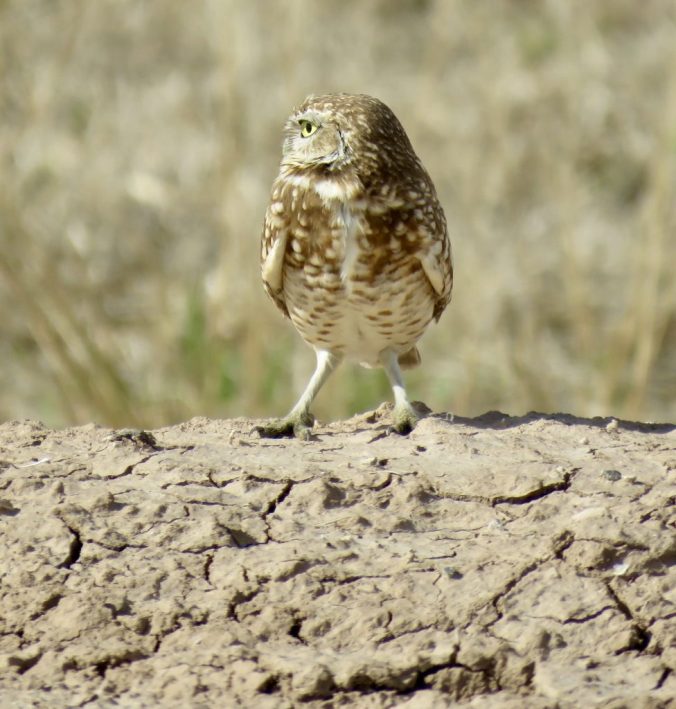





























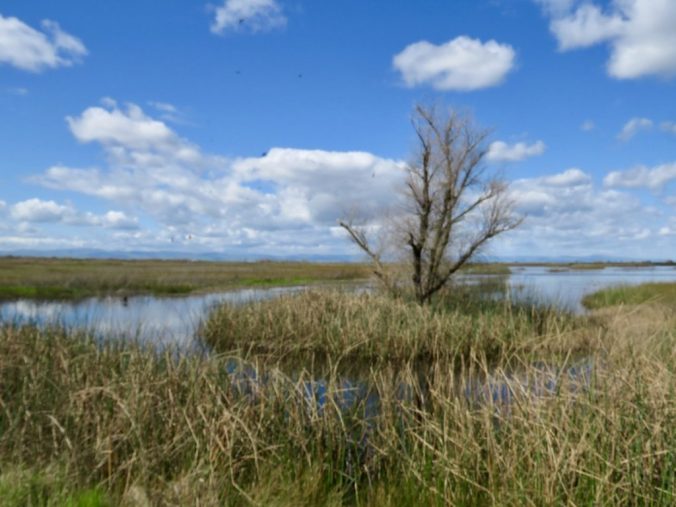






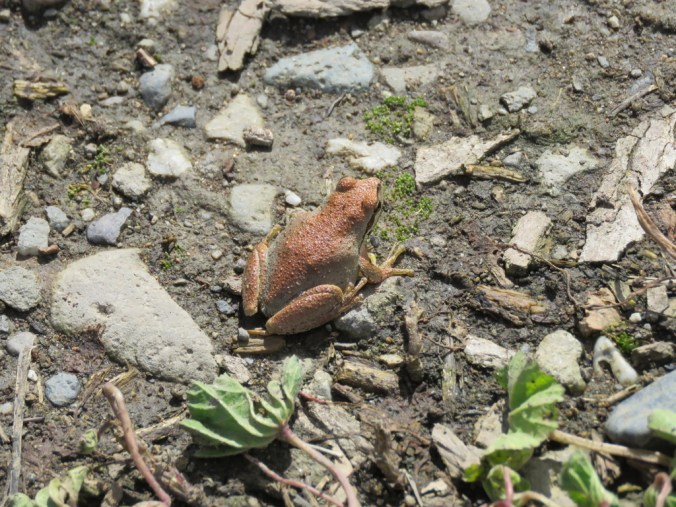





























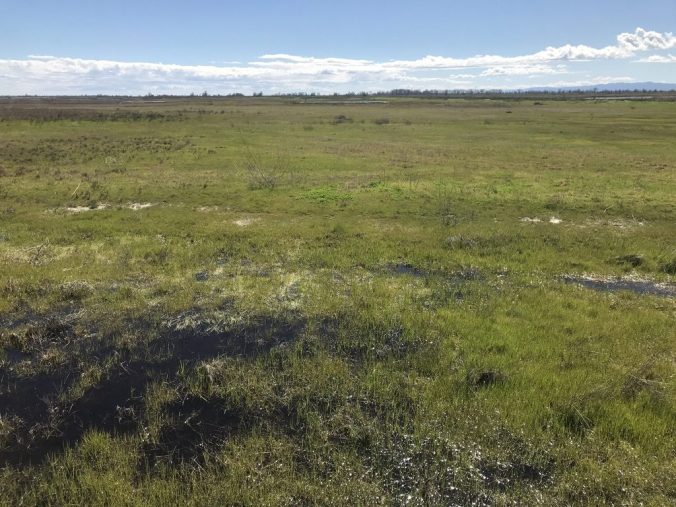
















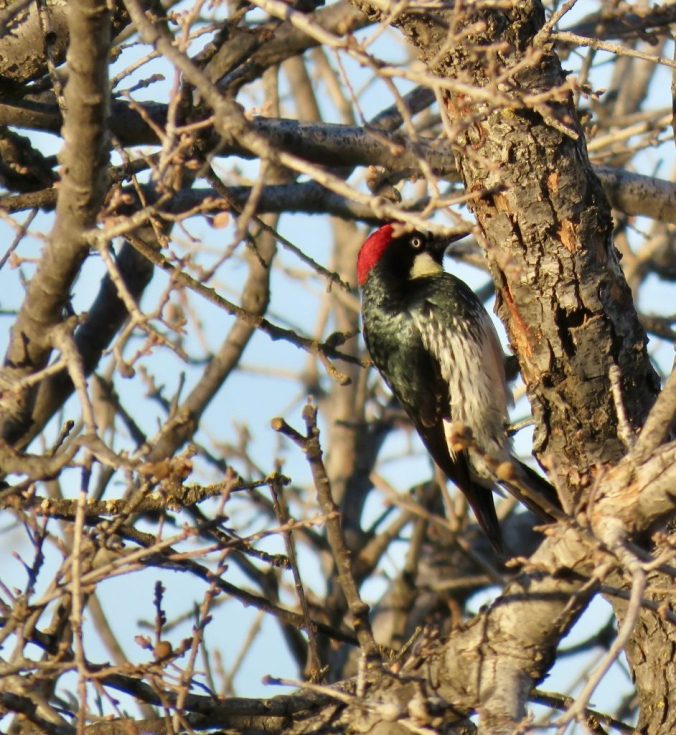





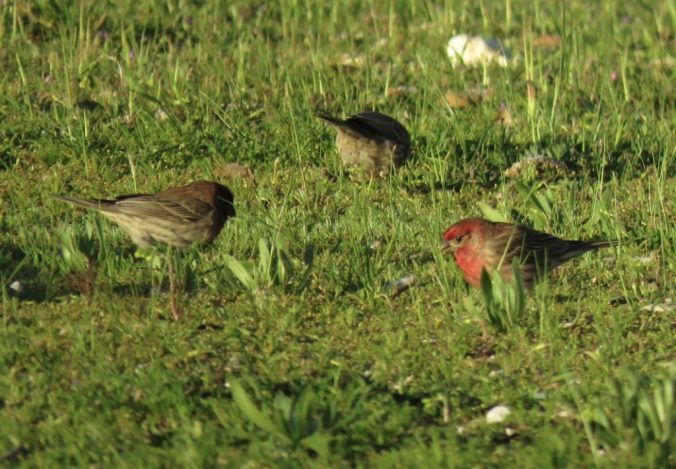

















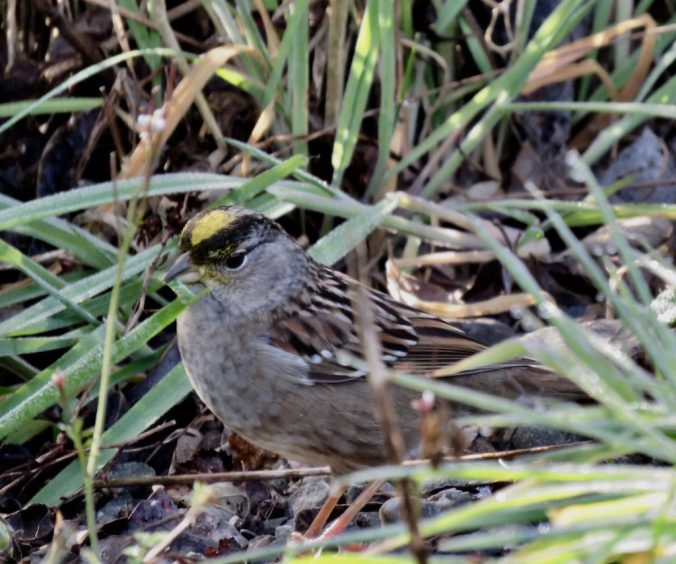






















































































































































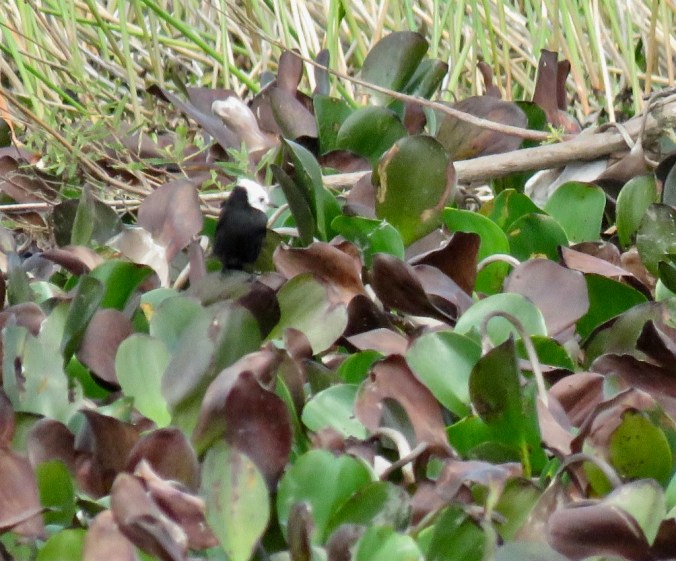






















































































































































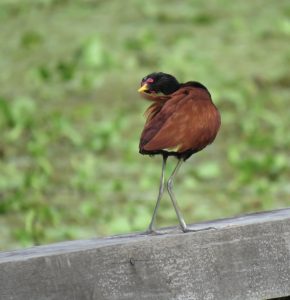


















































































































































































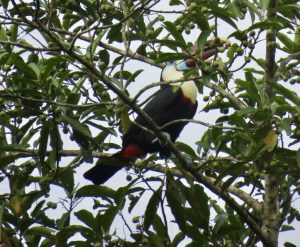


































































































































































































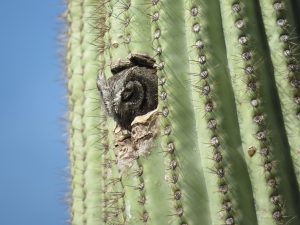
















































































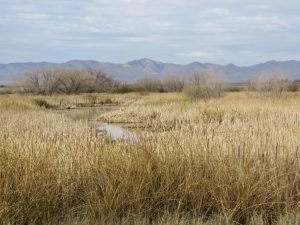











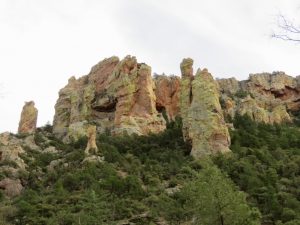


























































































































































































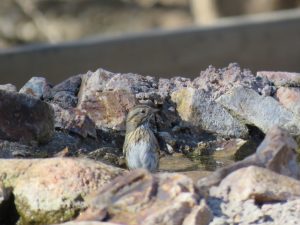






































































































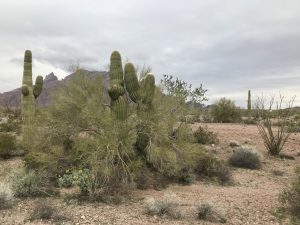






























































































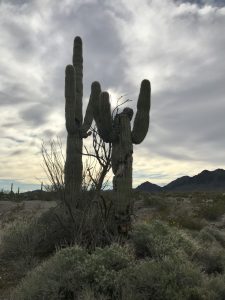




































































































































































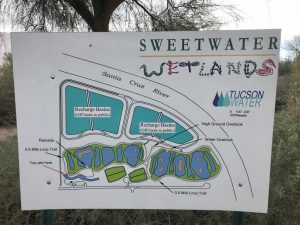

























































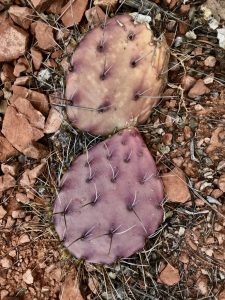







































































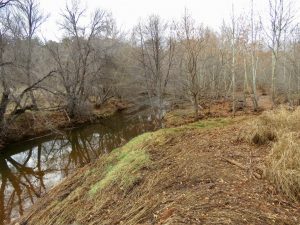








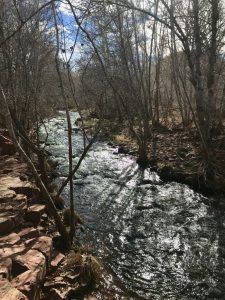



















































































































































































































































































































































































































































































































































































































































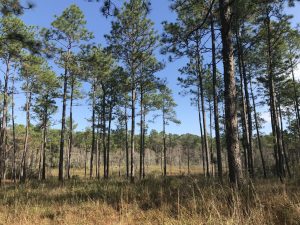






























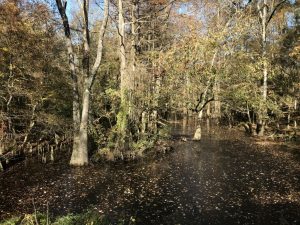














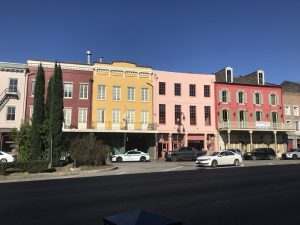

































































































Recent Comments